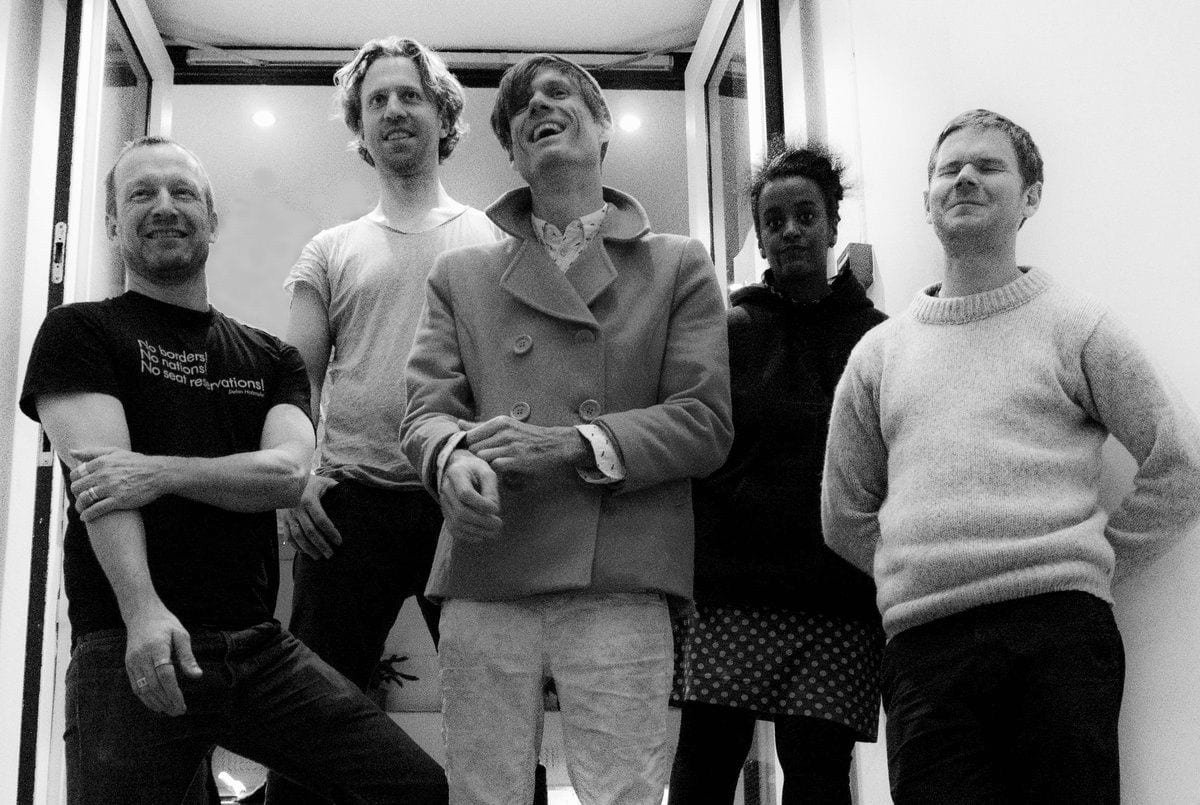
When I came across the first album by the End, I thought it was just the collaboration between two stellar saxophone players, Kjetil Møster and legendary sax icon Mats Gustafsson. As interesting that would be on it own, the End is simply so much more. This is a full band, which features not only the two great free jazz pioneers but also some prominent figures in the experimental scene including guitarist Anders Hana, Deerhoof drummer Greg Saunier (who has since been replaced by Borge Fjordheim) and Ethiopian experimental singer Sofia Jernberg.
Even though Møster and Gustafsson are the bigger names of this work, and the album is based in big part on their presence, this collective operates much more within a band setting, instead of diving into a dialogue between the two baritone saxophones. Having performed live before jumping to the studio has allowed the musicians to work on the concept of the End and unearth their musical vision for the entity. In that way, the End produces a surrealistic jam session through a vivid, dystopian reality, allowing all the different elements of their music to be heard in equal measures.
There is a fine balance that takes into account all the individual elements of this works and is responsible for the final amalgamation of sounds that is Svårmod Och Vemod Är Värdesinnen. The leaders of this recital, for the most part, remain Gustafsson and Møster, but the other members still influence the textures and pacing of this endeavor greatly. Hana produces his noisy ideas through a combination of high distortion and feedback, as in the start of “Svårmod”, awakening a hellish recital that kicks off the record. Similarly, Jernberg’s vocal delivery becomes the focal point many times across the record, reverting the record into a deconstructed, primal state highlighted by hazy moments of psychedelic goodness, as is the case with “Vermod”.
Similarly, Saunier’s stellar drumming works its way through the various textures and drives the pacing and progression of the album. In a record that is so heavily influenced by the timbre of the sax, vocals, guitars as well as the bountiful sonic manipulations, Saunier can lay the foundations on top of which all these ideas originate. This is most prevalent in the more straightforward moments of this record, as is the case with “Vermod”, which sees the band explore rock motifs, filled with hooky guitar riffs and a desert rock-esque scenery, before indulging in free rock stylistics.
As is the case with musicians that are well versed in improvising off each other, the End displays an impressive grasp on both the dynamics of their music and the progression of their work. Moving through minimal backgrounds and hazy ambiances, the band lays down the subtle foundations of the long form “Translated Slaughter” with Jernberg’s vocals placed in the very center of this dystopian realm. The ambiance that is produced is simply infernal, with Jernberg giving an amazing performance, displaying the full range of her vocal capabilities, morphing from one manifestation to the next. The manner in which the track washes into the second long-form composition “Don’t Wait” is a testament to both the dynamics, which become more abrupt and immediate, as well as the progression, which sees this continuity of sounds build up to an impressive crescendo. The subsequent break into a complete free jazz mode, with the saxophones and drums going completely off the grid, while Jernberg drives a maniacal spoken word performance, summarize the ethics and essence of the End.
While the amount of collaborations in the improv scene is an advantage, it also tends to overwhelm the audience with the sheer volume of material that is out there. However, I do believe that the case with the End is different, and this is a record that transcends the realm of collaboration and sees these five musicians create a new entity that follows a band ideal. It is an impressive start that they have made with Svårmod Och Vemod Är Värdesinnen, and hopefully it will not be the last we hear from this collective.

